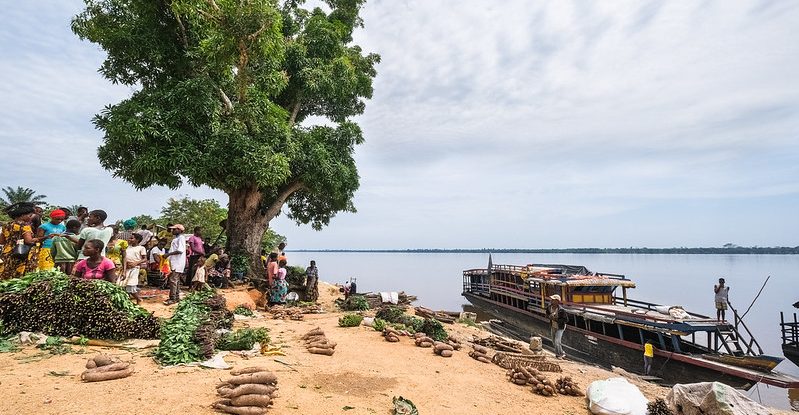The forests of Central Africa, through the provision of goods and services, play an essential role in regulating the climate system as well as contribute to the achievement of the UN Sustainable Development Goals (SDGs). The forests serve a number of other sectors including agriculture, energy, infrastructure and extractive industries. When these forests are sustainably managed, they have the potential of providing sustainable nature-based solutions to many issues related to water, energy, food and nutrition security, the fight against poverty, amongst others. However, the lack of appropriate intersectoral actions has been identified as a major hindrance to the proper monitoring of the contribution of Central African forests to the SDGs, according to a 2022 report.
The report, Congo Basin Forests – State of the Forests 2021, produced by the Central Africa Forest Observatory (OFAC) highlights the involvement of different actors in forest management as a recurrent problem. Also, it shows that a silo approach to responding to forest degradation and biodiversity loss won’t work because of the multifunctional nature of forests. The researchers note that pressure from different industries are a threat to Central Africa’s forests, and as such strengthening the monitoring of the contribution of forests to the SDGs cannot be done in isolation by the actors of the forest sector alone. They cite Kinshasa, where 90% of the population uses firewood for cooking, as an example, and say the problems posed by the supply of wood energy should be addressed as an integral part of a coordinated energy policy that takes into account the main players in the biomass energy sector.
Moreover, Jeremie Mbairamadji and co-authors of the report, picked holes in the national statistical systems of Central African countries which they described as “lacking the capacity to produce timely, systematic, accurate, relevant and comparable data on forests.” Such data are required to establish baselines and report on progress on the contribution of forests to achieving the SDGs. The experts say the national statistical institutes of almost all countries of Central Africa face financial and human resource limitations which pushed them to neglect the monitoring of SDGs.
Another challenge facing Central African countries is the lack of the organizational culture of periodically reviewing policies and strategies in order to update and adapt them to new realities and requirements.
“It is very likely that the targets prioritized by Central African countries in their Voluntary National Review will not be revised by their 2030 deadline, as are several of their forest and environmental policies. The growing need for harmonized and quality data for monitoring the SDGs and the African Union’s Agenda 2063 is recognized by several countries in the sub-region as an emergency,” Sédric Edmond Tiobo’o of Cameroon’s National Institute of Statistics, a contributor to the report, said. He added that Chad has been on the path of reforming its statistical production system since 2019, while Cameroon is working to develop the third generation of the National Strategy for the Development of Statistics.
A lack of adaptive management culture was also identified amongst Central African countries. The researchers note that most of the public administrations of countries of the sub-region engaged in the development sectors such as agriculture, forestry, fisheries, livestock, and economy, use classic management approaches which do not necessarily integrate new approaches like ecosystem approach, results-based management and nature-based solution. Such new approaches are more flexible and adapt to various contexts, according to the researchers.
Despite the challenges, efforts to align the Convergence Plan of the Central African Forest Commission (COMIFAC) to the targets of the SDGs has made it possible to prioritize 31 targets of ten SDGs. A case in point highlighted in the report is SDG1 – eradicate poverty in all its forms and everywhere in the world – which is closely linked to the concerns addressed in the Convergence Plan’s priority area of intervention No.5 (socio-economic development and multi-stakeholder participation) as the forests of Central Africa provide jobs. Citing a 2013 study carried out by Richard Eba’a Atyi, the authors note that in Central African Republic and Gabon, the forestry sector is the leading private employer and remains the second largest employer after the state. In Cameroon, nearly 8,000 jobs are offered by the formal forestry sector as counted in 2008; with women are poorly represented — 281 out of 8,047 workers.
According to the researchers, of the ten SDGs considered in FAO’s 2018 State of the World’s Forests report, only SDG 11 – make cities and human settlements inclusive, safe, resilient and sustainable – has not been prioritized and taken into account in the analysis focused on Central African countries. The researchers say concerns related to urban forestry, trees in the city or even green spaces are not specifically addressed in COMIFAC’s 2015–2025 Convergence Plan.
To strengthen the monitoring of the contribution of forests to the SDGs, the researchers recommended that the capacities of national statistic agencies should be augmented. They also recommended the improvement of institutional coordination, citing DR Congo as an example which established the Congolese Observatory for Sustainable Development Goals within the Ministry of Planning. The need to build the capacity of Central Africa Forest Observatory and technical staff of ministries in charge of forests and the environment in the assessment of forest ecosystems was also raised.
This article is also available in [French].
We want you to share Forests News content, which is licensed under Creative Commons Attribution-NonCommercial-ShareAlike 4.0 International (CC BY-NC-SA 4.0). This means you are free to redistribute our material for non-commercial purposes. All we ask is that you give Forests News appropriate credit and link to the original Forests News content, indicate if changes were made, and distribute your contributions under the same Creative Commons license. You must notify Forests News if you repost, reprint or reuse our materials by contacting forestsnews@cifor-icraf.org.
